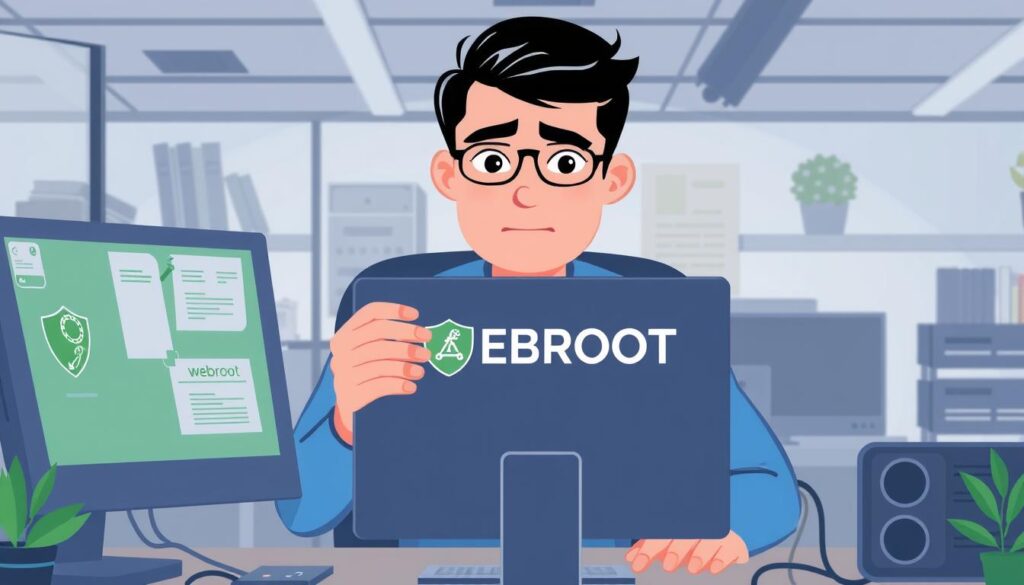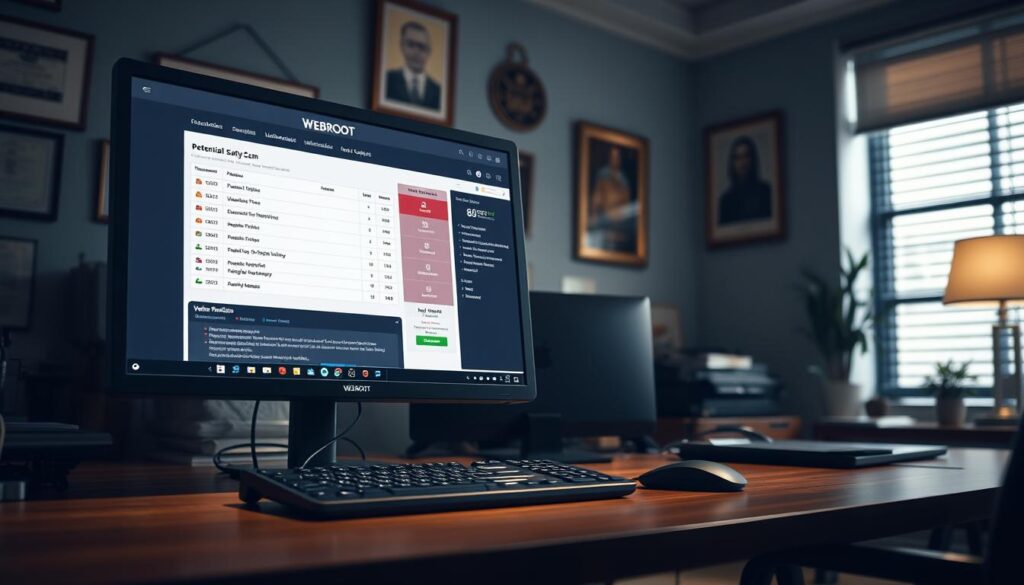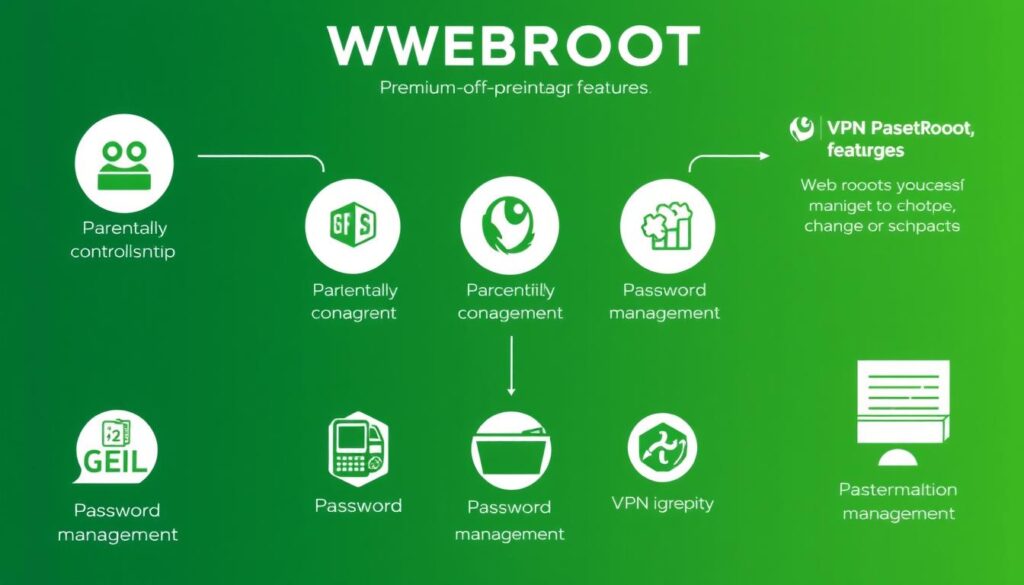Master WEBROOT as a Professional: Tips and Tricks

In today’s digital landscape, cyber threats are evolving rapidly, making robust security measures essential for protecting our devices and data. WEBROOT is a cutting-edge cybersecurity software designed to safeguard our online presence from malware, phishing, and identity theft.
With its cloud-based technology and real-time threat detection, WEBROOT provides comprehensive protection without compromising system performance. As we navigate the complexities of the digital world, mastering WEBROOT is crucial for both personal and professional security management.
By understanding its key features and capabilities, we can maximize our security and ensure the integrity of our data and devices.
Key Takeaways
- Understand WEBROOT’s comprehensive cybersecurity capabilities.
- Learn how to maximize protection against evolving cyber threats.
- Discover the importance of cloud-based technology in cybersecurity.
- Explore the benefits of mastering WEBROOT for professional security management.
- Gain insights into WEBROOT’s features and how they enhance security.
Understanding WEBROOT’s Cloud-Based Security Architecture
At the heart of WEBROOT’s effectiveness is its sophisticated cloud-based security architecture. This architecture is designed to provide comprehensive protection without compromising system performance. WEBROOT achieves this through its lightweight design and efficient scanning engine, making it an ideal solution for both personal and business use.
WEBROOT’s approach differs significantly from traditional antivirus solutions, which often rely on large signature databases and frequent updates. These traditional methods can slow down systems and disrupt work. In contrast, WEBROOT’s cloud-based architecture ensures real-time protection without causing system slowdowns.
How WEBROOT Differs from Traditional Antivirus Solutions
Traditional antivirus products often consume significant system resources, leading to performance issues. WEBROOT, on the other hand, is designed to be lightweight, taking up very little space and minimizing its impact on system resources. This makes it particularly suitable for older devices and high-performance systems alike.
WEBROOT’s efficient scanning engine performs thorough security checks while maintaining system responsiveness. This is crucial for business environments where system performance directly impacts productivity.
| Feature | WEBROOT | Traditional Antivirus |
|---|---|---|
| System Impact | Minimal | Significant |
| Scanning Speed | Fast | Variable |
| Real-Time Protection | Yes | Yes |
| Cloud-Based | Yes | No |
The Advantages of Cloud-Based Threat Intelligence
WEBROOT’s cloud-based threat intelligence provides a proactive approach to cybersecurity. By leveraging a vast cloud-based database, WEBROOT can identify and mitigate threats in real-time, enhancing overall protection.
Real-Time Protection Without System Slowdowns
One of the key benefits of WEBROOT’s architecture is its ability to provide real-time protection without impacting system performance. This is achieved through its efficient scanning capabilities and minimal resource usage, making it ideal for use on a variety of devices.
Setting Up WEBROOT Like a Professional

A professional setup of WEBROOT antivirus involves several key steps that enhance its effectiveness. To ensure you’re getting the most out of your security software, follow these guidelines for optimal installation, configuration, and management.
Optimal Installation and Configuration Steps
To start, download and install WEBROOT from the official website. During installation, ensure you grant the necessary permissions for the software to function correctly. Once installed, configure the settings to align with your security needs. This includes setting up real-time protection and adjusting scan settings.
Proper configuration is key to maximizing WEBROOT’s capabilities. Ensure that you enable features such as anti-phishing and anti-ransomware protection. These features are crucial for safeguarding your devices against emerging threats.
Customizing Scan Settings for Maximum Protection
Customizing scan settings allows you to tailor WEBROOT’s protection to your specific needs. You can choose between different scan types, such as quick scans for regular checks and full system scans for deeper inspections. Scheduling scans during periods of low system activity can help maintain performance.
By customizing scan settings, you can ensure that your devices are protected without compromising system resources. This balance is essential for maintaining both security and performance.
Managing Multiple Devices Through the Centralized Console
For users with multiple devices, WEBROOT’s centralized console offers a streamlined way to manage security across all devices. This feature is particularly useful for businesses and households with several devices.
Through the console, you can monitor device security, apply uniform security policies, and receive alerts on potential threats. This centralized management capability simplifies the task of keeping all your devices secure, ensuring comprehensive protection across your digital environment.
Mastering WEBROOT’s Advanced Scanning Capabilities

To master WEBROOT’s advanced scanning capabilities, it’s essential to understand the different scan types and their applications. WEBROOT offers a range of scanning options designed to detect and mitigate various types of threats. By understanding how and when to use each scan type, users can optimize their security posture.
Understanding the Four Scan Types and When to Use Each
WEBROOT provides four primary scan types: System Scan, Full Scan, Custom Scan, and Quick Scan. Each serves a distinct purpose in threat detection and system maintenance.
System Scan vs. Full Scan
A System Scan is designed to check the most critical areas of the system where malware typically resides. It’s a targeted approach that balances thoroughness with speed. On the other hand, a Full Scan is a comprehensive scan that checks every file on the computer, providing the most thorough examination but requiring more time and system resources.
Custom Scan vs. Quick Scan
A Custom Scan allows users to select specific files, folders, or drives to scan, offering flexibility for situations where a targeted scan is needed. In contrast, a Quick Scan focuses on areas most likely to be infected, providing a fast assessment of the system’s security status.
Scheduling Automated Scans for Optimal Protection
Scheduling automated scans is crucial for maintaining continuous protection. WEBROOT allows users to schedule scans at times when the computer is likely to be on but not in active use, ensuring that scans do not interfere with work or other activities. By automating scans, users can ensure their system is regularly checked for threats without manual intervention.
To schedule a scan, navigate to the scan settings, select the preferred scan type, and choose the desired frequency and time. This feature ensures that the system remains protected and up-to-date with the latest threat definitions.
Interpreting Scan Results Like a Professional
Interpreting scan results effectively is critical for understanding the security status of the system. WEBROOT provides detailed reports that include information on detected threats, actions taken, and recommendations for further steps.
To access detailed scan reports, navigate to the Reports tab, change the view from “Summary” to “History,” and click on the PDF icon to view comprehensive details. This process provides a record of every change WEBROOT makes during performance scans, offering valuable insights into the system’s security history.
Understanding the different threat classifications used by WEBROOT is also essential. Threats are categorized based on their severity and nature, helping users prioritize their response. By distinguishing between false positives and genuine threats, users can take appropriate action to mitigate risks.
| Threat Classification | Description | Recommended Action |
|---|---|---|
| Malware | Software designed to harm or exploit the system. | Quarantine or remove the detected malware. |
| Potentially Unwanted Programs (PUPs) | Programs that may not be malicious but can be annoying or unnecessary. | Review and potentially uninstall the PUP. |
| False Positives | Legitimate files or programs mistakenly identified as threats. | Whitelist the file or program to prevent future false detections. |
By mastering WEBROOT’s advanced scanning capabilities, users can significantly enhance their system’s security. Understanding the different scan types, scheduling automated scans, and interpreting scan results are all crucial steps in leveraging WEBROOT’s full potential.
Becoming a Professional WEBROOT Master with Advanced Protection Features
With cyber threats on the rise, leveraging WEBROOT’s advanced security features is vital for protecting sensitive information and identity. As we explore these features, we’ll delve into how they can be maximized to provide comprehensive security.
Maximizing Ransomware Protection
WEBROOT’s ransomware protection is a critical component of its advanced security features. Ransomware attacks can be devastating, encrypting files and demanding payment in exchange for the decryption key. WEBROOT’s solution involves real-time threat detection and blocking, ensuring that your system remains protected against these types of attacks. To maximize this feature, it’s essential to keep your WEBROOT software up to date and ensure that real-time scanning is enabled.
Configuring Web and Phishing Shields Effectively
The Web and Phishing Shields in WEBROOT are designed to protect against online threats by analyzing web traffic and blocking malicious content. Configuring these shields effectively involves setting the appropriate sensitivity levels and ensuring that they are always enabled. By doing so, you can significantly reduce the risk of falling victim to phishing scams and other web-based threats.
Optimizing Firewall Settings for Enhanced Security
WEBROOT’s firewall is another crucial component of its security suite. Optimizing firewall settings involves configuring it to allow or block specific applications and services. By fine-tuning these settings, you can prevent unauthorized access to your system while still allowing legitimate communications.
Utilizing Identity Shield to Prevent Data Theft
Identity theft is a growing concern, with cybercriminals using various methods to steal sensitive information. WEBROOT’s Identity Shield is designed to protect against such threats by securing login credentials and preventing unauthorized access. To utilize this feature effectively, it’s crucial to understand how it works and how to configure its settings to maximize protection. Identity Shield protects against keyloggers, screen scrapers, and clipboard hijackers, ensuring that your personal data remains secure during online transactions.
To get the most out of Identity Shield, you should configure its settings to balance protection with usability. This involves setting appropriate alert levels and ensuring that the feature is enabled for all sensitive applications. By doing so, you can enjoy comprehensive identity protection without disrupting legitimate activities.
By mastering WEBROOT’s advanced protection features, including Identity Shield, you can significantly enhance your security posture. These features work in tandem to provide comprehensive protection against various cyber threats, ensuring that your sensitive information and identity remain secure.
Leveraging WEBROOT’s Premium Features

By leveraging WEBROOT’s premium features, users can significantly enhance their online security. WEBROOT offers a range of advanced tools designed to provide comprehensive protection for individuals and families.
Dark Web Monitoring and Identity Theft Protection
WEBROOT’s Dark Web Monitoring feature is a crucial component of its premium package, offering users the ability to monitor the dark web for their personal data. This feature helps in early detection of identity theft, allowing users to take prompt action.
Identity theft protection is a critical aspect of online security, and WEBROOT’s premium features address this concern effectively.
Password Management Best Practices
Effective password management is essential for maintaining online security. WEBROOT’s premium features include tools that help users manage their passwords securely.
By using a password manager, users can generate and store unique, complex passwords for each of their online accounts, significantly reducing the risk of unauthorized access.
VPN Configuration for Maximum Privacy
Configuring a VPN is a straightforward process with WEBROOT’s premium features. A VPN provides an additional layer of security by encrypting internet traffic, ensuring maximum privacy online.
To configure the VPN, users simply need to follow the setup instructions provided by WEBROOT, and they will be able to browse the internet securely.
Parental Controls Setup and Management
WEBROOT’s parental controls offer a range of features designed to help parents manage their children’s online activities. These features include time limits, website filtering, and detailed reports on online activities.
To set up parental controls, parents can create user profiles for their children, customize the protection levels based on age, and monitor their online activities.
While WEBROOT’s parental controls are primarily designed for Windows, parents can still explore additional measures to monitor their children’s online activities across all devices.
System Optimization Techniques for WEBROOT Power Users

To get the most out of WEBROOT, understanding system optimization techniques is vital for maintaining peak performance. As a powerful security solution, WEBROOT not only protects your system from threats but also offers tools to enhance its overall efficiency.
One of the key aspects of system optimization involves utilizing the right tools effectively. WEBROOT’s system optimizer tools are designed to streamline your system’s performance by eliminating unnecessary clutter and fixing issues that could slow it down. Using these tools effectively can significantly improve your system’s boot times and overall responsiveness.
Using System Optimizer Tools Effectively
WEBROOT’s system optimizer tools provide a comprehensive approach to system maintenance. By regularly using these tools, you can identify and address potential issues before they become major problems. For instance, the tool can help you manage startup programs, which is crucial for maintaining faster boot times.
Managing startup programs is a straightforward process that involves identifying unnecessary applications that launch at startup and disabling them. This not only speeds up your system’s boot time but also reduces memory usage, contributing to a smoother overall performance.
Managing Startup Programs for Faster Boot Times
To manage startup programs effectively, start by reviewing the list of applications set to launch at startup. Disable any programs that are not essential to your immediate needs. This simple step can significantly reduce boot times and improve system responsiveness.
Another critical aspect of system optimization is registry cleaning and junk file removal. The registry is a vital component of your system, containing settings and options that control the operation of Windows and installed applications. Over time, the registry can become cluttered with obsolete or incorrect entries, potentially slowing down your system.
Registry Cleaning and Junk File Removal Best Practices
When it comes to registry cleaning, it’s crucial to proceed with caution. Creating backups before performing any cleaning operations is essential to prevent potential system instability. WEBROOT’s registry cleaning feature can help identify and fix issues, but it’s also important to understand how to interpret the detailed reports provided after the cleaning process.
To access these reports, navigate to the Reports tab, change the option from “Summary” to “History,” and click the PDF icon to view comprehensive details. This allows you to understand the changes made to your system and ensures that you can troubleshoot any issues that may arise.
As emphasized by experts, “Regular maintenance is key to maintaining optimal system performance.” By following best practices for registry cleaning and junk file removal, you can ensure your system remains efficient and secure.
By implementing these system optimization techniques, WEBROOT power users can enjoy a more efficient, secure, and responsive computing experience. Regularly using system optimizer tools, managing startup programs, and carefully performing registry cleaning operations are all crucial steps in maintaining peak system performance.
Troubleshooting and Maintenance Like a Pro
To get the most out of WEBROOT, it’s essential to know how to troubleshoot common issues and perform routine maintenance. Effective troubleshooting and maintenance ensure that WEBROOT continues to provide optimal security and protection for your system.
WEBROOT’s cloud-based architecture means that it is always up to date, reducing the time between threat discovery and definition. This real-time updating capability is a significant advantage in maintaining security. However, like any software, WEBROOT is not immune to occasional issues that may require troubleshooting.
Resolving Common WEBROOT Issues
Common issues with WEBROOT can often be resolved through simple troubleshooting steps. These may include restarting the WEBROOT service, checking for updates, or reinstalling the software. It’s also crucial to ensure that your system meets the minimum configuration requirements for running WEBROOT efficiently.
- Check the WEBROOT console for error messages that can guide you to the source of the problem.
- Ensure your operating system and other software are up to date.
- Restart your computer and try restarting the WEBROOT service.
Keeping WEBROOT Updated and Optimized
Keeping WEBROOT updated is crucial for maintaining optimal protection. WEBROOT’s cloud infrastructure ensures that all active agents are updated in real-time. However, it’s also important to periodically check that your WEBROOT installation is functioning correctly and is configured optimally.
Regularly reviewing your WEBROOT settings and ensuring that scans are running as scheduled can help maintain system security. Additionally, keeping your system’s files and folders organized can improve scan efficiency.
Creating and Managing Exclusions Properly
Managing exclusions properly is vital to maintaining the balance between security and system performance. Exclusions allow you to specify files, folders, or processes that WEBROOT should not scan. This can be useful for improving performance or avoiding false positives.
When creating exclusions, it’s essential to carefully consider the security implications. You should only exclude files or processes that you are certain are safe. It’s also a good practice to regularly review your exclusions to ensure they are still necessary.
- Determine which files or folders should be excluded based on their necessity and safety.
- Document your exclusions for future reference and to maintain visibility into security exceptions.
- Test your exclusions to ensure they are working as intended without compromising security.
Choosing the Right WEBROOT Plan for Your Needs

Apply for a paid planLearn More
Understanding the differences between WEBROOT plans is key to making an informed decision that meets your security requirements. WEBROOT offers a variety of plans designed to cater to different user needs, from individual consumers to businesses.
WEBROOT Essentials: Features and Limitations
WEBROOT Essentials is designed for individuals seeking basic antivirus protection. It includes essential features such as antivirus and anti-malware protection. However, it lacks some advanced features available in higher-tier plans.
WEBROOT Premium: Enhanced Protection Benefits
WEBROOT Premium offers enhanced protection benefits, including identity theft protection and enhanced security features for online transactions. This plan is suitable for users who require more comprehensive security.
WEBROOT Total Protection: Comprehensive Security Suite
WEBROOT Total Protection is the most comprehensive plan, offering a full suite of security features including antivirus, anti-malware, identity theft protection, and more. It’s ideal for families or individuals with multiple devices.
Business vs. Personal Plans: Key Differences
WEBROOT’s business plans differ significantly from personal plans, offering features such as centralized management, enhanced security for business environments, and scalability to accommodate growing organizations. Business plans are designed to meet the complex security needs of businesses, including compliance and reporting requirements.
When choosing a WEBROOT plan, consider the number of devices you need to protect, the level of security required, and whether you need features like identity theft protection or centralized management for business environments. By understanding these factors, you can select the plan that best fits your needs.
Conclusion: Becoming a True WEBROOT Security Expert
As we conclude our journey to becoming a professional WEBROOT master, it’s clear that this expertise offers unparalleled security benefits. Throughout this article, we’ve explored the advanced features and configuration techniques that make WEBROOT a powerful tool against evolving cyber threats. By mastering WEBROOT, individuals and organizations can ensure comprehensive protection across all their devices.
We’ve highlighted the importance of understanding WEBROOT’s cloud-based architecture, configuring its advanced scanning capabilities, and leveraging its premium features. These skills, combined with ongoing learning and adaptation to new features and emerging threats, are key to maintaining a robust security environment. Moreover, WEBROOT’s lightweight and cloud-based antivirus solution provides a significant advantage over traditional antivirus software, offering real-time protection without system slowdowns.
To maximize protection, we encourage readers to implement the professional techniques covered in this article. By doing so, you’ll not only enhance your digital security posture but also stay ahead of the evolving cyber threat landscape. Staying current with WEBROOT updates and best practices is crucial for continued protection.
FAQ
What is WEBROOT and how does it protect my devices?
WEBROOT is a cloud-based antivirus software that protects devices from malware, ransomware, and other online threats by using advanced threat intelligence and real-time monitoring.
How does WEBROOT’s cloud-based architecture improve security?
WEBROOT’s cloud-based architecture allows for faster detection and response to emerging threats, as well as reduced system resource usage, resulting in improved overall security and system performance.
Can I manage multiple devices with WEBROOT?
Yes, WEBROOT offers a centralized console that allows users to manage and monitor multiple devices, making it an ideal solution for households and businesses with multiple devices.
How does WEBROOT’s Identity Shield protect my personal data?
WEBROOT’s Identity Shield feature monitors the dark web for sensitive information, such as social security numbers and credit card numbers, and alerts users to potential identity theft.
What is the difference between WEBROOT’s Essentials, Premium, and Total Protection plans?
WEBROOT’s plans vary in the level of protection and features offered, with Essentials providing basic antivirus protection, Premium adding identity theft protection and password management, and Total Protection offering comprehensive security features, including VPN and parental controls.
How do I schedule automated scans with WEBROOT?
Users can schedule automated scans through the WEBROOT console, choosing from various scan types and frequencies to ensure optimal protection without system slowdowns.
Can WEBROOT protect against ransomware and phishing attacks?
Yes, WEBROOT offers advanced protection against ransomware and phishing attacks through its real-time threat detection and web shield features.
How does WEBROOT’s Password Manager work?
WEBROOT’s Password Manager securely stores and generates strong, unique passwords for users, reducing the risk of password-related security breaches.
What is Dark Web Monitoring, and how does it work?
Dark Web Monitoring is a feature that scans the dark web for sensitive information, such as credit card numbers and social security numbers, to detect potential identity theft and alert users.
Can I use WEBROOT on multiple operating systems?
Yes, WEBROOT is compatible with multiple operating systems, including Windows, macOS, and Android, allowing users to protect devices across different platforms.







